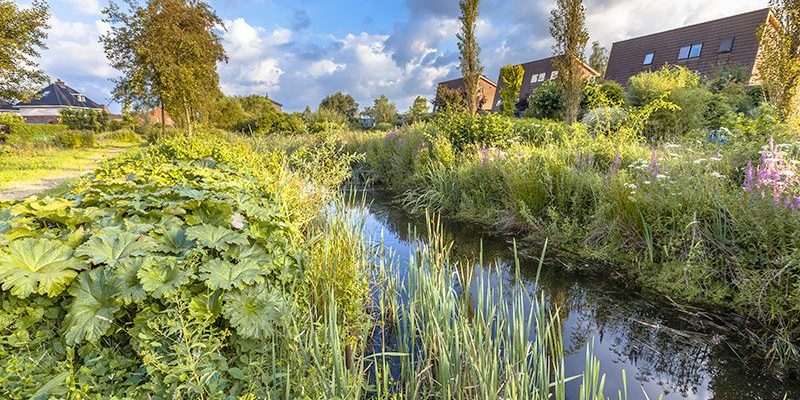The sustainable management of stormwater and runoff is based on mimicking the natural water cycle (retention, evaporation, infiltration, etc.) while ensuring its depollution, to prevent flooding, replenish water tables, relieve wastewater sewers and improve the quality of water bodies. For that purpose, we apply both principles of source control and treatment train: a succession of appropriate steps such as swales, retention and/or infiltration basins, or other solutions described in other sections of this site (filter strips, wetlands, bioretention, rain gardens, mycofiltration, etc.).
In addition to the design of each facility, our added value lies in the selection of each step and their order of succession in the treatment train, to ensure optimal performance and operation
Approaches to manage stormwater and runoff that take account and bring multiple benefits such as water quantity (flooding prevention), water quality (pollution control), improving biodiversity and amenity are called Sustainable Drainage Systems (SUDS) or low impact developments (LIDs).








